|
| Front page | | Contents | | Previous | | Next |
Appendix D
Reference shop. Load determined by scaling of appliance length/store size
Introduction
In order to compare the energy consumption of the different supermarkets, it was necessary to refer to a standard shop. The circumferences of the freezing and cooling gondolas, the
lengths of the cooling racks and counters, and the volumes of the freezing and cold stores were set for the standard shop. In order to get the variation in the load included in the energy
consumption, the ratio of the actual load to the nominal load was assumed to be constant. The nominal load was determined on the basis of the information from the manufacturer
concerning the refrigeration requirements for the appliances and the stores.
Procedure for calculating comparable energy consumptions
The energy consumption was calculated on basis of the hourly means of measured evaporation and condensation pressures, compressor suction temperatures, and used compressor
capacity, and the data from the compressor manufacturers. The power was corrected to power at a condensation temperature of 30°C to eliminate the influence from different operation
strategies on the condenser side (e.g., heat re-circulation).
Data on the nominal refrigeration requirements of the individual refrigeration appliances and cooling/freezing storages is given for each supermarket. These data are converted to a
nominal consumption value per appliance meter and per m 3 of store.
Since the nominal consumption per appliance meter and per m 3 of store was different for each supermarket (the nominal consumptions of the appliances in the newest supermarkets are
lowest), a mean for the four supermarkets was calculated. A reference supermarket was defined with freezing and cooling gondolas with a 50m circumference, 35m cooling racks, 12m
counters, 350m 3 cooling storage and 100m 3 freezing storage. This reference supermarket corresponds to a mean of the four supermarkets.
The energy consumption of each supermarket was converted to a consumption of the reference supermarket. This was done on the assumption that the relation between the nominal
consumption and the actual consumption is the same for the actual supermarket and the reference supermarket. This means that the evaporation temperature of the reference
supermarket is the same as the measured evaporation temperature.
The reference loads on the cooling and frost sections of the cascade systems were determined first. The load on the high-temperature section is the sum of the load from freezing plus the
power consumption of the low-temperature compressors and the load from the cooling appliances.
Calculation of energy consumption based on data from the compressor manufacturers
"Measured" actual power consumption
Based on the measured data the refrigeration capacity and the power consumption at the reference condensation temperature can now be calculated as follows:
Actual volume flow is calculated on the basis of measured pressure ratio and suction temperature using the expression:

with:
 : Actual volume flow through the compressor : Actual volume flow through the compressor
 : Volumetric efficiency : Volumetric efficiency
Pc Condensation pressure
P0: Evaporation pressure
Tc: Condensation temperature
 : Geometric stroke volume of the compressor : Geometric stroke volume of the compressor
Ncom: Number of compressors
IComCap: compressor capacity in use
The mass flow is, therefore:

with:
v(T1,P0): Specific volume at suction stop valve
T1 Temperature at suction stop valve
P0: Evaporation pressure
The "measured" refrigeration output is thus:

with:
h1(T1,v1(T1,P0)): Enthalpy at suction stop valve
h3(T3): Enthalpy after condenser
T3: Temperature after condenser
And the corrected "measured" power consumption is:

with:
h2cor,is(T2cor,is,v2cor,is) Enthalpy after compressor at isentropic compression
 : Isentropic efficiency : Isentropic efficiency
Pc.cor: Condensation pressure at reference condensation temperature
Tc,cor: Reference condensation temperature
Reference load
Conventional system
The refrigeration capacity for the reference supermarket with separate circuits for cooling and freezing are determined using the following procedure:

with:
| Lfreezegond,ref: |
Freezing gondola circumference in reference shop |
| Lcoolgond,ref: |
Cooling gondola circumference in reference shop |
| Lcoolrack,ref: |
Length of cooling rack in reference shop |
| Lfreezegond,nom: |
Freezing gondola circumference in actual shop |
| Lcoolgond,nom: |
Cooling gondola circumference in actual shop |
| Lcoolrack,nom: |
Length of cooling rack in actual shop |
| Lcounter,nom: |
Length of counter in actual shop |
| Vfreezestore,ref: |
Volume of freeze store in reference shop |
| Vcoldstore,ref: |
Volume of cold store in reference shop |
| Vfreezestore,nom |
Volume of freeze store in actual shop |
| Vcoldstore,nom: |
Volume of cold store in actual shop |
| qLm,freeze: |
Refrigeration load per m freezing gondola circumference in
reference shop |
| qL,freeze: |
Refrigeration load per m freezing gondola circumference in
actual shop |
| qgm,cool: |
Refrigeration load per m cooling gondola circumference in reference
shop |
| qrm,cool: |
Refrigeration load per m cooling rack in reference shop |
| qg,cool: |
Refrigeration load per m cooling gondola circumference in actual
shop |
| qr: |
Refrigeration load per m cooling rack in actual shop |
| qcounter: |
Refrigeration load per m counter in actual shop |
| qVm,freeze: |
Refrigeration load per m 3 freeze store in reference
shop |
| qVm,cold: |
Refrigeration load per m 3 cold store in reference
shop |
| qV,freeze: |
Refrigeration load per m 3 freeze store in actual
shop |
| qV,cold: |
Refrigeration load per m 3 cold store in actual
shop |
| Qfreeze,ref: |
Actual load on freezing in reference shop |
| Qfreezeref |
Actual load on cooling in reference shop |
| Qfreez,nom: |
Nominal load on freezing in actual shop |
| Qcool,nom |
Nominal load on cooling in actual shop |
| Qcool,measured: |
"Measured" load on cooling in actual shop |
| Qfreeze,measured: |
"Measured" load on freezing in actual shop |
and the power consumption is determined as:

with:
| Wtotal,ref: |
Calculated total power consumption in reference shop |
| Wcool,measured,kor: |
Measured power consumption for cooling in actual shop at standard
condensation temperature |
| Wfreeze,measured,cor: |
Measured power consumption for freezing in actual shop at standard
condensation temperature |
Cascade system
The refrigeration capacity and power consumption of the freezing section of the cascade system is calculated as indicated above when the system has separate circuits. The power
consumption of the freezing section of the reference system is thus:

with:
| Wfreeze,ref: |
Calculated power consumption for freezing in reference shop |
| Wfreeze,measured,cor |
Measured power consumption for freezing in actual shop at standard
condensation temperature |
The load from the cooling appliances and storage of the cascade system in the reference system is determined as:

with:
| Qcool,tot,measured: |
Measured refrigeration load on the high-temperature compressors |
| Qcool,measured: |
Measured load on appliances and stores based on measured total
energy consumption in the high-temperature compressors and measured load on freezing
appliances and energy consumption by low-temperature compressors |
The total power consumption by the high-temperature section is determined as:

The total power consumption of the cascade system is, therefore:

Results
Figure D1 shows a comparison of the energy consumption per day for September 2003. The situation was quite similar during the rest of the measuring period.
Figure D2 shows a comparison of the power consumption (hourly means) for a 24-hour period (1 September 2003)
Figures D1 and D2 show that the energy consumptions of the reference shop with data from ISO-1 and ISO-3 are about 2/3 of the energy consumptions of the reference shop with
data from ISO-2 and ISO-4. A critical examination of the calculated energy consumptions of the reference shop, however, shows that the loads are not the same for the reference shop
with data from the four supermarkets, as shown in figures D3 (load on cooling) and D4 (load on freezing). ISO-1 and ISO-3 have loads on cooling which is about 2/3 of the loads for
ISO-2 and ISO-4. The load on freezing for ISO-3 is considerably below the loads for ISO-1, ISO-2, and ISO-4. This difference in load is partly explained by difference in relative
load, as shown in figures D5 and D6. These figures show that especially ISO-4 has a load profile which differs considerably from those of the other three. These figures show that
ISO-4 especially has a load profile, which is very different from those of the other three. This difference must be caused by a scaling factor, the nominal load, which is too uncertain.
Conclusion
It must be concluded that a "simple" scaling based on nominal refrigeration requirement does not produce a true picture of the energy consumptions of the supermarkets because of
uncertainty regarding the nominal refrigeration requirements.
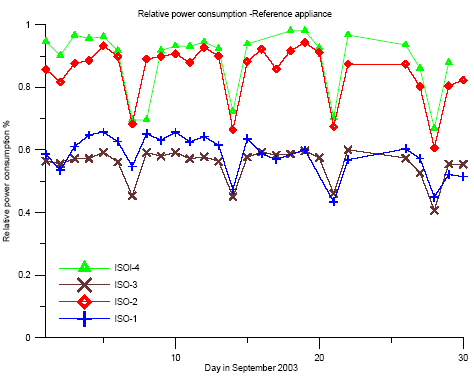
Figure D1. Energy consumption per day in reference shop based on measured energy consumption (month)
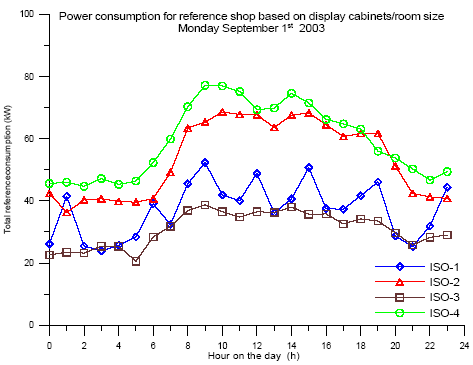
Figure D2. Power consumption in reference shop based on measured energy consumption (day)
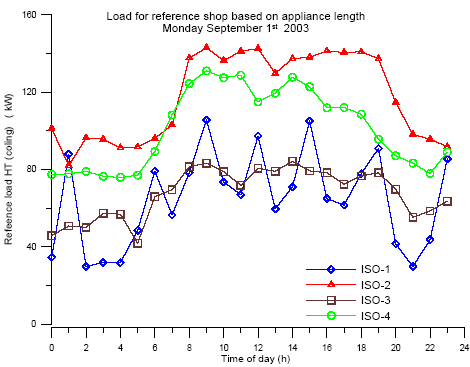
Figure D3. Cooling load in reference shop based on measured load (day)
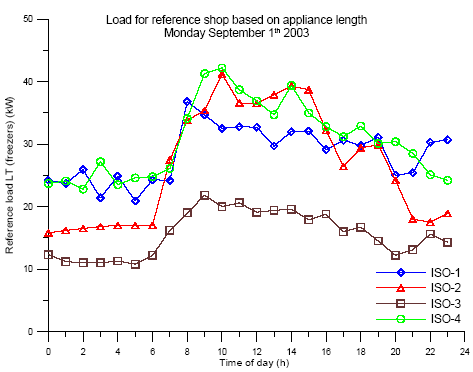
Figure D4. Freezing load in reference shop based on measured load (day).
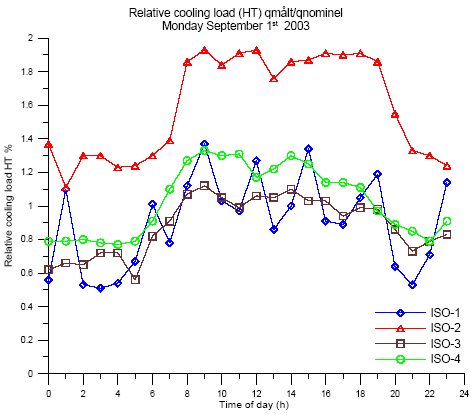
Figure D5. Relative load cooling (day)
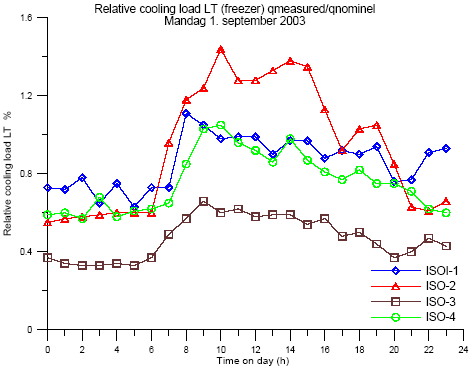
Figure D6. Relative load freezing (day)
| Front page | | Contents | | Previous | | Next | | Top |
Version 1.0 September 2004, © Danish Environmental Protection Agency
|